If you have pain, swelling, or heaviness in your legs, ankles, or pelvis you may have varicose veins (venous insufficiency). Typically, those with varicose veins also suffer from pain while standing or walking for long periods of time. Venous insufficiency is a disease and should be treated by professionals who specialize in comprehensive varicose vein management, including diagnosis and treatment.
We are one of the most respected vein care centers in the nation. Our physicians are board-certified vascular specialists with dedicated fellowship training in interventional radiology. We specialize in the latest techniques of diagnostic imaging and minimally invasive endovascular treatment.
In addition to obtaining a detailed medical history and physical examination, we perform a comprehensive ultrasound evaluation that will help identify the sources of venous disease. Because every patient’s venous anatomy and condition are unique, we develop an individual, specialized treatment plan for each patient we see.
No. Varicose veins may be hidden from your view. Just because you don’t see varicose veins, does not mean that you don’t have them. Our diagnostic evaluation may indicate that you are suffering from varicose veins, even when they are not visible. Often, someone suffering from leg pain will visit their doctor, not knowing they have varicose vein disease.
Veins contain one-way valves that allow blood to return back to the heart. If those valves are faulty, blood can travel in the opposite direction-away from the heart. This condition, known as venous reflux, can result in painful swelling, skin damage, blood clots and other complications.
At IVC, we offer minimally invasive, advanced alternatives to traditional vein stripping or ligation. These procedures allow us to treat the primary source(s) of reflux, or the diseased vein(s) feeding your varicosities. In many cases, a small tube (or catheter) is inserted into the diseased vein which allows us to treat the vein using lasers and other technologies. We also perform sclerotherapy and limited excision of diseased veins depending on vein location and size.
Each procedure, completed under a localized anesthetic, takes approximately one hour. Depending on your unique situation, additional time may be spent at the office. After the procedure(s), you are able to immediately resume most daily activity with some limitations.
There is some minor discomfort which is usually well tolerated. Local anesthetic is administered during the procedure. Afterward, taking an over-the-counter anti-inflammatory medication is usually all that is necessary for your comfort.
Unless the activity is vigorous, you should not limit your activity after a procedure. Most recovery occurs in the first week, but patients can generally resume normal daily activity within hours of completing the procedure.
The blood flow from your varicose vein is redirected into other healthy veins which readily compensate for the veins that have been treated and closed.
Minimal scarring may result from the varicose vein treatments we perform. In some cases, the treated site may have mild residual bronzing or slight discoloration. These changes generally diminish with time.
In most cases, it takes more than one visit to treat your varicose veins. However, if only a single vein is causing problems, only one treatment may be needed. We consider follow-up evaluation to be a critical part of any patient’s care.
Absolutely. Just as you may have varicose veins in your legs, you could have them in your pelvis. Several days before menstruation some women get throbbing pains in their hips and legs-which is a common symptom of Pelvic Venous Insufficiency. The physicians at IVC are experts in treating this condition.
As we only serve one patient at a time, an appointment means that we reserved that specific time for you. If you need to cancel or reschedule your appointment, please call us at least 24 hours in advance.
Pregnancy can make a woman more susceptible to developing varicose veins. During pregnancy, a combination of vein compression in the pelvis and decreased smooth muscle tone in the vein wall cause vein distension. Since smooth muscle tone helps veins pump blood back to the heart, smooth muscle relaxation can result in excessive blood pooling in leg veins, which contributes to the development of varicose vein disease.
If varicose veins or pelvic venous insufficiency make pregnancy (and life between pregnancies) unbearable, treatment is available prior to subsequent pregnancies. You do not have to wait until you are done bearing children.
Due to genetics and many other factors, you may be predisposed to future problems. In some cases we view our services as “varicose vein management,” rather than a one-time “cure all”. Since there is no way to definitively prevent additional veins from becoming diseased, varicose veins may be an on-going challenge for some individuals.
Most insurance companies will cover the majority of procedures we offer. If there is a question about coverage, our staff will determine if your insurance will approve the expenses. If your insurance does not cover a procedure, payment options can be arranged to meet your individual needs.
When you see the gold seals of accreditation prominently displayed in our imaging facility, you can be sure that you are in a facility that meets standards for imaging quality and safety. Look for the ACR Gold Seals of Accreditation. To achieve the ACR Gold Standard of Accreditation, our facility’s personnel qualifications, equipment requirements, quality assurance, and quality control procedures have gone through a rigorous review process and have met specific qualifications. It’s important for patients to know that every aspect of the ACR accreditation process is overseen by board-certified, expert radiologists and medical physicists in advanced diagnostic imaging.
Our facility has voluntarily gone through a vigorous review process to ensure that we meet nationally-accepted standards of care. Our personnel are well qualified, through education and certification, to perform medical imaging, interpret your images, and administer your radiation therapy treatments. Our equipment is appropriate for the test or treatment you will receive, and our facility meets or exceeds quality assurance and safety guidelines.



